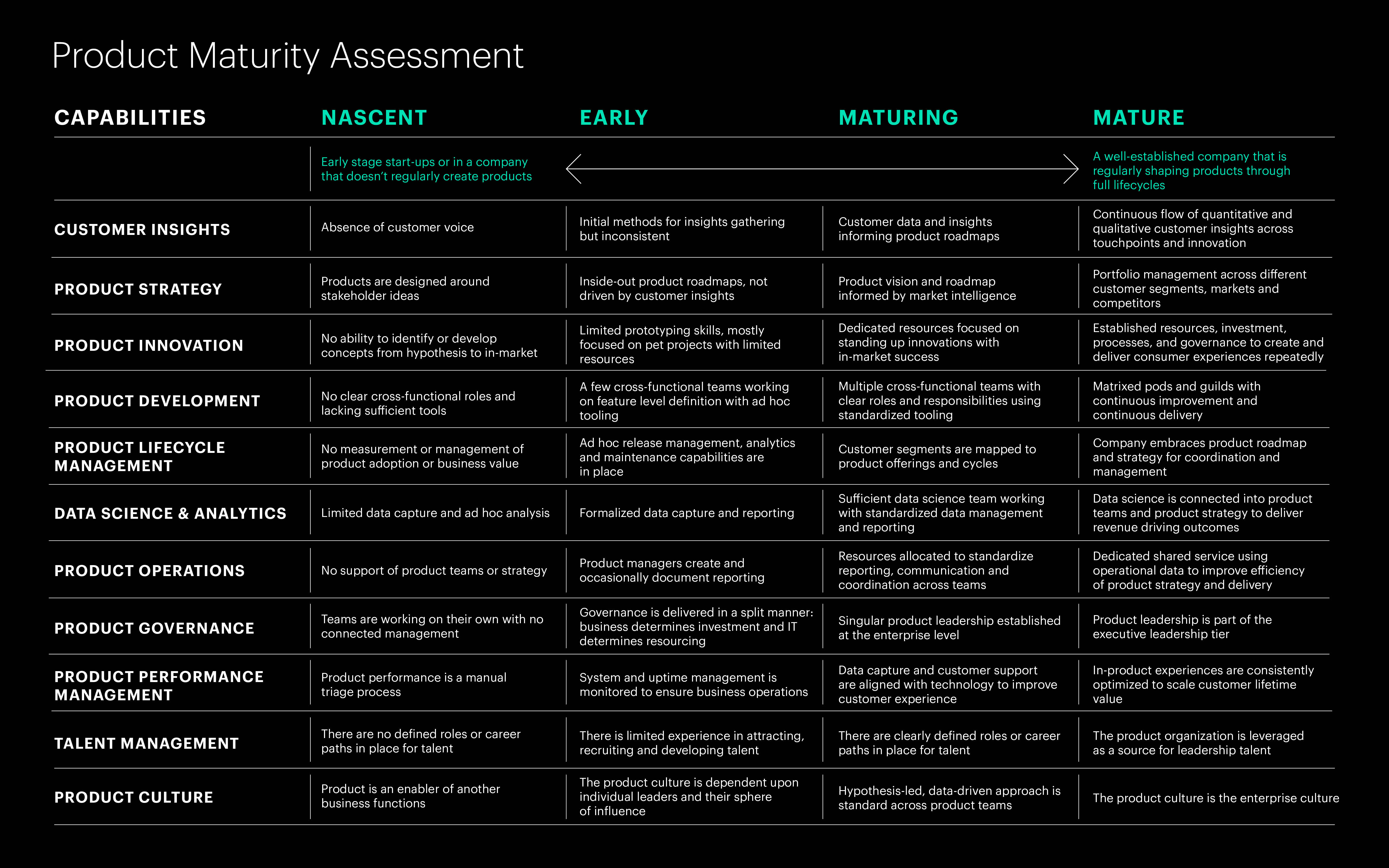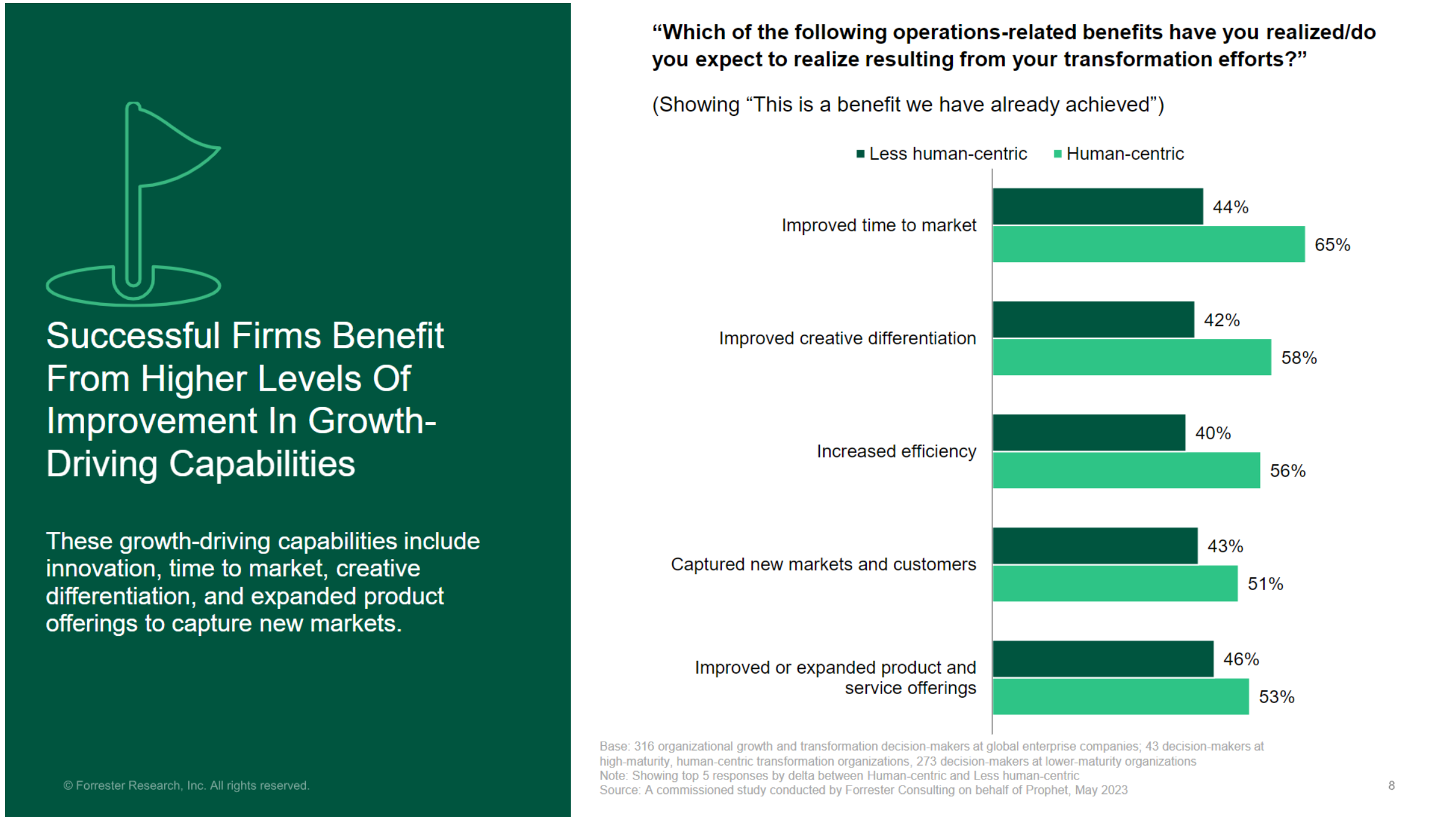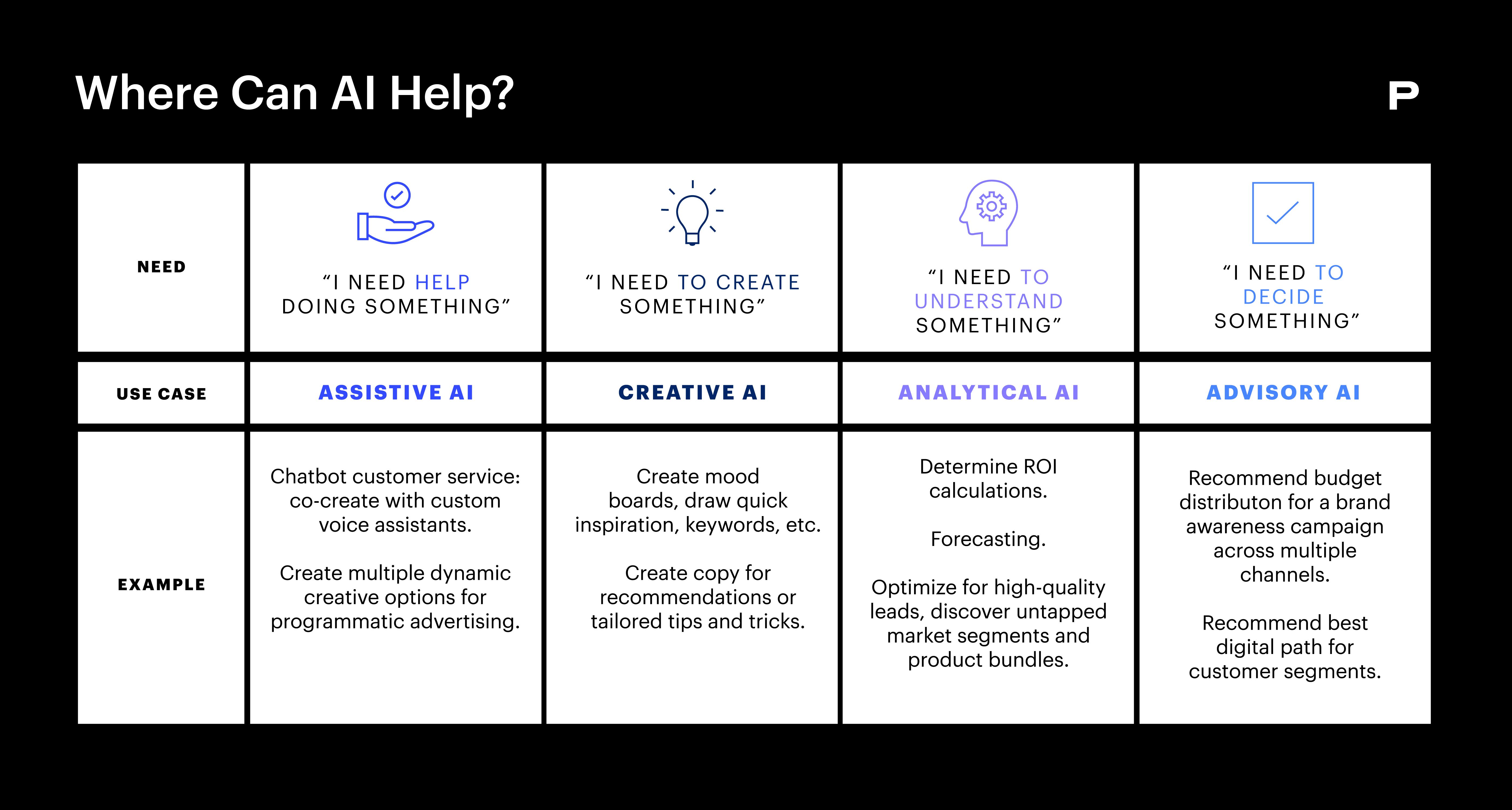BLOG
How to Structure and Scale a Product Organization for Growth
Transforming into a product-led business is imperative for sustained growth. Here, we break down the three common stages of maturation and offer strategic solutions for overcoming product delivery hurdles.
Software transforms every industry, and many have enviously observed the impressive growth and returns that software companies have amassed over the past two decades. Think of a hugely successful software company and chances are it espouses a product-led model. Naturally, traditional companies are realizing that to compete and grow, they must look, think, and act like product-led, software companies themselves. But simply hiring product management experts is not enough. Functioning as a modern software company requires building the right kind of product ecosystems and teams in order to find new ways to engage with customers around existing offerings, cross-sell opportunities and to create new channels for revenue. For many of these companies, the ambition to innovate is there, but the capabilities often aren’t. Unclear strategy, siloed functions and multiple handoffs cripple the speed and effectiveness of product releases, subsequently ruining the end customer experience. It’s an extremely challenging shift to tackle.
We frequently encounter organizations that struggle to advance beyond one of these three critical stages of maturation. Let’s break these steps down:
- Building cross-functional product teams – this is the first step, and is about connecting the requisite skill sets, ways of working and focus to successfully build and deliver a digital touchpoint.
- Build and support multiple products – second, it’s time to move past those baseline capabilities and explore how to build and support multiple products in-market. Many often do this inefficiently, without connection to a strategy, capabilities or in a way that effectively delivers ROI across segments. It’s important to ensure that expansion doesn’t come at the price of the business’ reputation or quality of products or services. It requires a shared understanding of product excellence, visionary leadership and an unrelenting customer focus.
- Scale – finally, when the capabilities are established and products are successfully sustained across a range of customer types and use cases, companies see this as the time to scale in market. However, often they are unable to build a connected approach that allows them to scale in line with the ambitions of the business and grow their customer base.
Embracing a Software Company Mindset and Unlocking Success: Three Strategic Solutions for Product Delivery & Maturation Hurdles
1. Embedding Product Fundamentals
Let’s start with an example of what happens when you are learning a new capability for the first time. We were working with a physical medical device manufacturer who had deep-rooted relationships with physicians and hospital networks. They had data, clear use cases and insights aplenty. Despite some successful pilot projects that sales reps were able to bootstrap to support their doctors, the company lacked the methods and capabilities to scale these projects or monetize them consistently for realizable ROI. We worked with them to define clear strategic goals metrics and a documented strategy on what opportunities they would and wouldn’t spend time and effort on to deliver customer and business value. In support of this strategy, we set up product pods of cross-functional capabilities, enabling each pod to work without functional dependencies. Armed with our Hypothesis 2 Action methodology, the pods would work at pace to bring market-backed evidence on the critical assumptions allowing them to quickly discard concepts that weren’t viable and focus on delivering clear customer value.
2. Developing a Product Based, Customer-Centric Organization
Transitioning into a product-centric, agile organization requires strategic coordination of product pods and experiences to create efficiencies across people, processes, data and technology and in the important use cases across the customer journey. Organizations at this stage often have a myriad of products in market but lack the structure to manage them in a way that reduces redundancy and gains a clear ROI against strategic business goals. The challenge is twofold: internally, numerous pet-projects have emerged organically in response to market needs, while externally, there is a scattered approach to different customer requirements, often leading to confusion.
We worked with an international digital real estate firm in Europe that had built several digital product pilots across a range of customer needs and countries. They had the upper hand in multiple European markets but operated disparately amongst the countries. The vision was clear: a consolidated European digital real estate platform, like Zillow’s dominance in North America. Using our Product Maturity Model, we worked with them on a three-pronged approach: assessing the current ability of their cross-functional product pods, strategy and products; identifying what their future ambition was for strategic use cases and ways of working; and delivering a phase-by-phase transformation plan, which led to the creation of a cohesive digital product platform, thereby maximizing economies of scale.

(Enlarge)
3. Scaling Product Management
As businesses grow, scaling becomes inevitable. There’s a compelling need to deliver a consistent level of product excellence, build direct-to-consumer relationships and unlock new avenues for revenue. Yet, scalability often opens the doors to redundancies, lack of clarity in customer segmentation and the sunk cost and effort to support ‘zombie projects’ kept alive for continued customer relationships rather than for the strategic use of resources.
Over the past few years, we’ve been working with a leading national hardware big-box retailer. With a clear aim of generating exponential new revenue in the next three years, they had acquired several e-commerce companies catering to a professional segment of their customer base. The path forward involved evaluating the existing landscape of competitors for this segment and simultaneously assessing existing operational capabilities and ways of working using our Product Maturity Model. With this grounding, we helped the retailer articulate a comprehensive North Star strategy on where to invest, where to sustain and where to exit in exponentially growing this software-led business. After doing a deep gap analysis of their capabilities internally alongside a build/partner/buy strategy, we developed a multi-year digital product transformation roadmap. This aligning of internal enablers with the desired customer experience outcomes provided clear guidance for training, resource allocation, product management, investment and metrics to track their growth strategy.
In the evolving business landscape, the art of creating, developing and scaling products is paramount. Evolving to become more like a software company with strategic insights, well-structured approaches, empowered product management and a customer-centric mindset means organizations will be better equipped to rise to the challenge.
FINAL THOUGHTS
Through our years of collaboration with clients to develop, manage and mature their product capabilities, we have refined the core competencies needed to build successful product managers, product teams and businesses. Business leaders who identify with the three stages in this article can gain valuable insights by applying our Product Maturity framework to assess their company’s current status and growth opportunities.

















